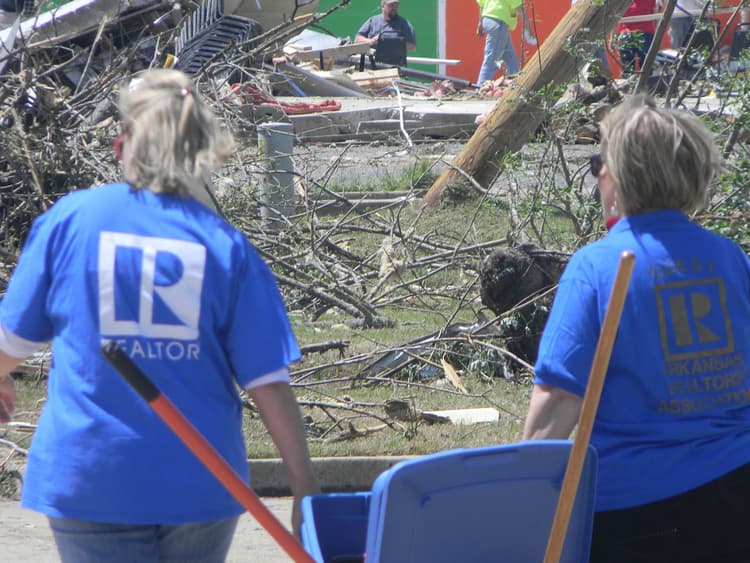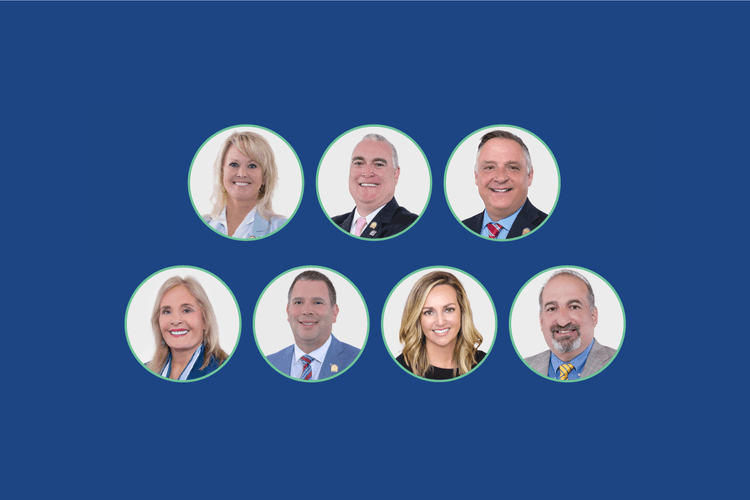Incorporating culture and impact can be made easier by taking specific steps and building subsequent actions at your local association, based on your previous efforts. This actionable roadmap can help you identify specific actions that will help you research and understand your membership and discover which demographic groups may be underrepresented in your market. Use this roadmap as the first steps to engage your full spectrum of membership, including those potentially underrepresented, through activities and leadership.
Association Roadmap for Culture Change & Impact
Overview of the Actionable Roadmap
Step 1: Research & Analysis
Start by asking what demographic groups you are referring to when you discuss inclusion of diversity. Ask and answer the question – who in our community is not well represented in our decision making about association business and policy? Who is missing from the table(s)? Everyone who lives in your community and market area is occupying real estate. Who worked with them to find their real estate? Who serves their real estate needs?
Most often these will be racial and ethnic groups, but you may also want to look at generational groups, LGBTQ+ inclusion, or religious groups. Then explore data on the demographics of your community, especially the market area your members serve and your board jurisdiction. The market area data is often widely available, especially when looking at racial and ethnic demographics. Your county or city government, the census bureau, state government all have this data. Often you can find it online when searching for information about specific municipalities and counties. If you can, find out information on any significant changes in demographic makeup – especially new groups or groups that are growing, reflecting new residents of your area.
Second, the demographics of the association’s membership can be obtained through the NAR Insights HUB, which allows the local association’s Point of Entry to access data on the local association’s membership. Look for percentages of your membership especially relative to population demographic groups in your community. Data on generations, religion, LGBTQ+ and some other categories are not yet available on the Insights HUB and gaining that information will often be difficult.
Third, the demographics of your leadership needs to be assessed by observation. Most associations leadership is fairly well known. Take this information and identify which population groups are not well represented in your leadership based on the data – does it match your earlier assumptions and information.
Fourth, identify opportunities for the structure of your existing association staff for DEI efforts. Who on your existing staff will take on or share DEI responsibilities and/or is your association looking to hire a staff member dedicated to DEI.
Taking all this together, the next step in the process is to determine where the mismatch is and where you want to start your activities. The Actionable Roadmap helps you determine activities that will address the mismatch where you feel your work is needed.

REALTORS® M1: Member Engagement System
Utilize the NAR M1 Demographic Tool to explore member demographics; outreach to underserved members who may not be represented in your Association.
Leading With Diversity
Explore how inclusion of diversity will strengthen the association, marketplace and community.
Global Alliances
Identify the demographic makeup of your local market areas. Research the organizations in your local community, i.e. global companies, universities, etc. What companies are in your marketplace?
Diversity, Equity & Inclusion Sample Job DescriptionsMarch 7, 2022
View these sample job descriptions, specifically written for association staff roles dedicated to Diversity, Equity & Inclusion.
Step 2: Discovery
If the membership is not reflecting the market and one or more demographic groups is not well served by the membership, your activities generally will fall into the Discovery category as you will be identifying who serves that market now, their needs and passion related to real estate, and whether they already are loosely or formally organized. You might also want to help your members learn about the underrepresented groups. In a sense we are always engaged in discovery, and even if your focus is on a later action such as engagement or realizing the benefits of diversity in your leadership, you should consider some ongoing discovery activities.
Goals for discovery should ultimately be to identify those who are serving the underrepresented community, if and where they gather to discuss real estate, the real estate related issues they need action on, their knowledge and experience with the community, and their passions for member education, ethics and advocacy. Once these members are so identified, find ways to build personal relationships between your existing leadership and these members.

Step 3: Engage Members Representing Diversity You Desire to Include
If or once you know who is serving that community and you have started building your professional relationships with those serving any part of the community, begin activities designed to engage those members in the association. Engagement is often more successful when you match the activities with the member’s interests and passions. A member concerned about training would best be encouraged to participate in a Professional Development activity and meeting. Similarly, a member expressing concerns about government or a large institution’s impact on real estate might best engage in an advocacy capacity. It is important to seek and engage members who share an interest in the key purposes of the association which are assuring that members are adequately educated to best serve the customer and cooperate with each other, that members adhere to the Code of Ethics and operate ethically, and that the association advocates for property rights, homeownership and our members’ ability to do their work.
Goals for engagement would be greater participation in and taking a leadership role in association activities, meetings and committees. On an individual basis, during discovery you identified members to engage, and with these activities you can evaluate to see if your engagement efforts are producing more engagement for members representing underserved communities.

Step 4: Realize the Benefits of Inclusion
In order to Realize the benefits of an inclusive leadership, an association needs to be intentional about mentoring and training new leaders, building off your ongoing efforts to include diversity on your key committees and in your activities. It also requires engagement of the association’s leadership with the leadership and activities of any multicultural or related group of REALTORS® in your area. Many members will engage with a multicultural local group or perhaps a business group, it is important that REALTOR® association leaders are involved in those groups as well. Doing so will help your discovery and engagement efforts as well, but will pay off when leaders of those groups see how they can contribute as REALTOR® leaders.
Goals for these activities are qualitative as well as simply increasing diversity in leadership positions. Encourage your members to evaluate how effective your leadership is at including diversity, encouraging engagement, and mentoring and supporting diverse members seeking leadership.

Additional Resources
AE Culture & Impact Resources
Find impactful resources in support of building fair & accessible cultures within state & local associations. Login required to access.
Culture & Impact
The REALTOR® commitment to culture & impact is perhaps the strongest in real estate, going even further than the federal Fair Housing Act.


























